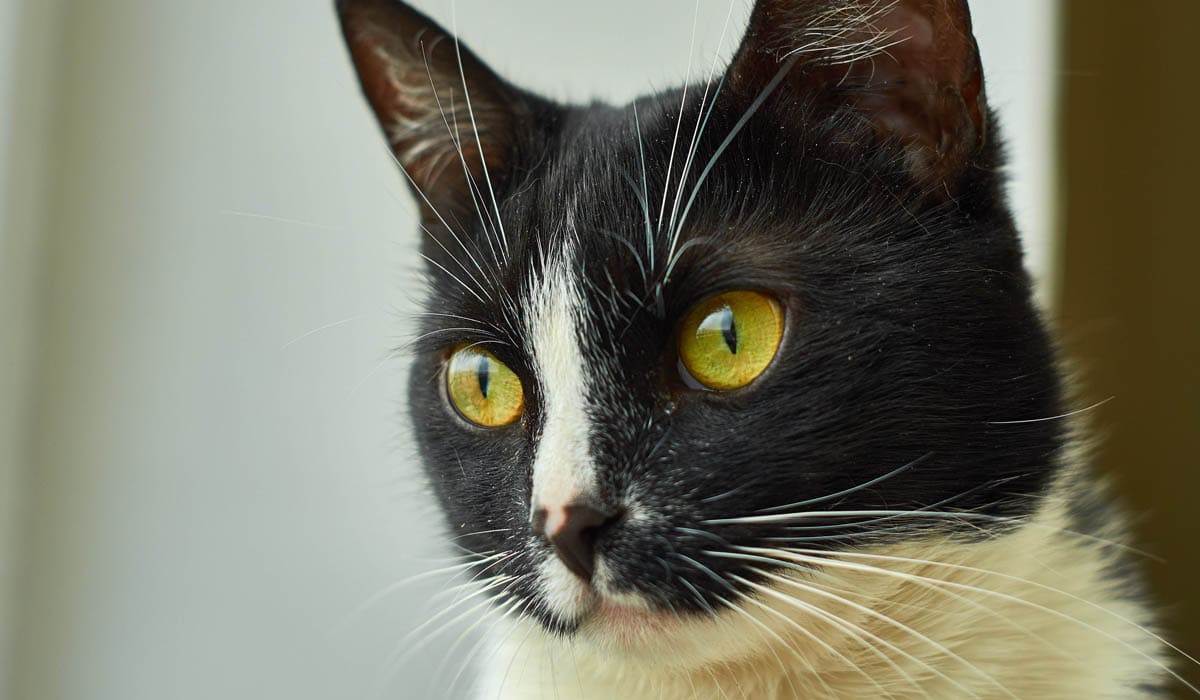Being able to read pet food labels really helps when choosing which food to buy for your cat. It is not a difficult task if you know what you are looking at. This article hopes to simplify what these labels mean, giving you, the carer more power and knowledge to choose the best possible food for your pet. Bear in mind that rules and regulations will vary from country to country, but many will follow the regulations of AAFCO (Association of American Feed Control Officials).
Typically, you will see four parts to a pet food label. The Display Panel (usually the front of the pack), Nutritional Adequacy Statement, Feeding Guidelines, Typical Analysis and the Ingredients panels.
Display panel
This is usually the first part of the label you will see on the shop shelf. Typically, it will have the name of the product, have an identifying image so you know the product is for cats, and the weight of the product. It may also specify if the food is a specific type, such as for kittens, senior pets, weight control, oral care etc.
AAFCO have set rules, called ‘95%, 25%, 3% rules’
- Beef Cat Food – If the product label reads ‘beef’ then it must contain a minimum of 95% beef (the same would obviously apply with chicken etc).
- Beef Dinner/Feast/Platter etc. – If the product label contains a modifier to the name, ie; reads ‘dinner, feast, platter’ etc., must contain 25% chicken (chicken etc). If more than one product is listed in the name, for example, ‘Chicken and Veal feast‘ then the product must contain 25% chicken and veal combined.
- With Beef – If the label reads ‘with‘ beef then it must contain a minimum of 3% beef.
- Beef Flavour – If a label reads ‘beef flavour‘ then it must have detectable amounts of beef, but there is no specific percentage required and it is usually minimal.
Nutritional adequacy statement
This usually includes a statement about the food and feeding instructions. If the product is labelled as ‘complete and balanced’ then it must meet standards established by the AAFCO and contain ingredients that meet the AAFCO Cat Food Nutrient Profile. This means that the product meets the nutritional requirements of your cat as set out by the AAFCO.
If the product is labelled as ‘Animal feeding tests using AAFCO procedures substantiate that Brand Name provides complete and balanced nutrition for the growth and maintenance of cats‘. This means that the product has been tested with AAFCO feeding trials.
Guaranteed analysis:
This lists the minimum percentages of protein and fat and the maximum percentages of fibre. They are listed as crude sources, not digestible sources. Ingredients vary hugely in quality and digestibility.
Dry matter values
This relates to how much protein is in the food once all the moisture has been removed. Two of the three Australian brands of food I have do not list the moisture content. But let’s presume the two tinned varieties contain a moisture content of 80% (which is about average for canned food). To calculate the dry matter minus the percentage of moisture from 100. Then divide this figure by the percentage of protein.
Dry matter percentages of three brands of food:
Brand A – Cheap supermarket tinned food |
|||
| Protein 8.5% | Moisture 80% | 100 – 80 = 20 / 8.5 | = 42.5% dry matter protein |
Brand B – Expensive ‘gourmet’ supermarket tinned food |
|||
| Protein 12% | Moisture 80% | 100 – 80 = 20 / 12 | = 60% dry matter protein |
Brand C – Premium dry food |
|||
| Protein 32% | Moisture 10% (as stated on pack) | 100 – 10 = 90 / 35.5 | = 39.4% dry matter protein |
So, while the premium dry appears to have the highest dry matter protein, Brand B, the expensive ‘gourmet’ brand actually contains the highest % of dry matter. However, quantity doesn’t necessarily translate to quality. Check to see what the first ingredient is on the product. Is it ‘meat, meat by-product or something else’?

